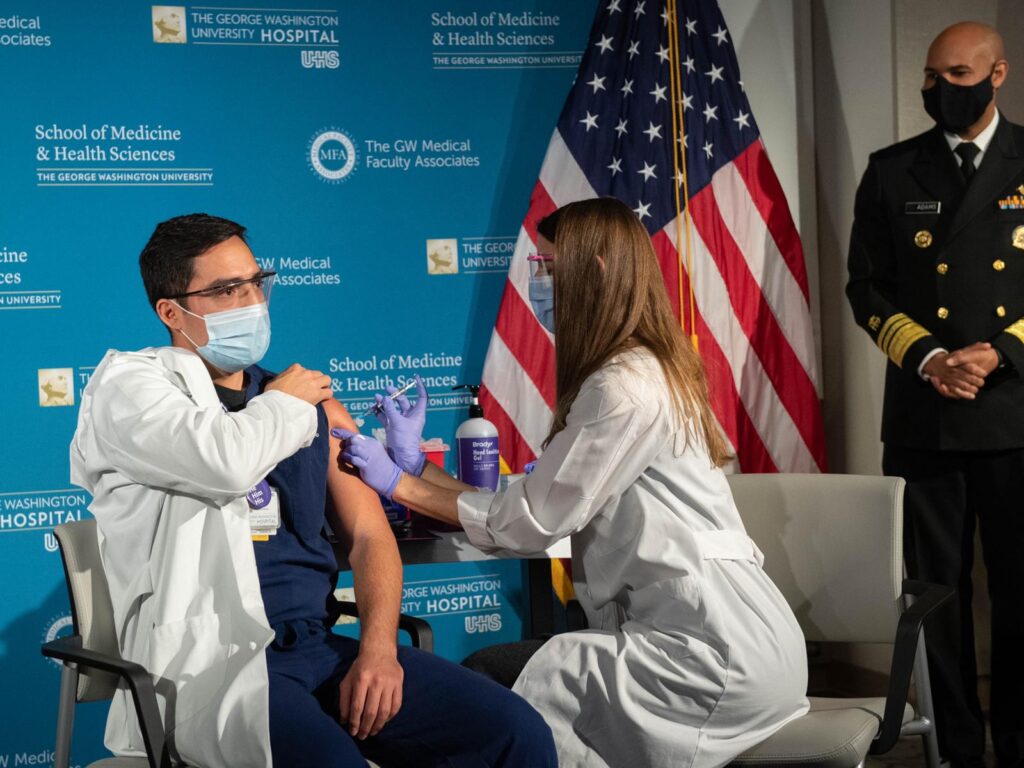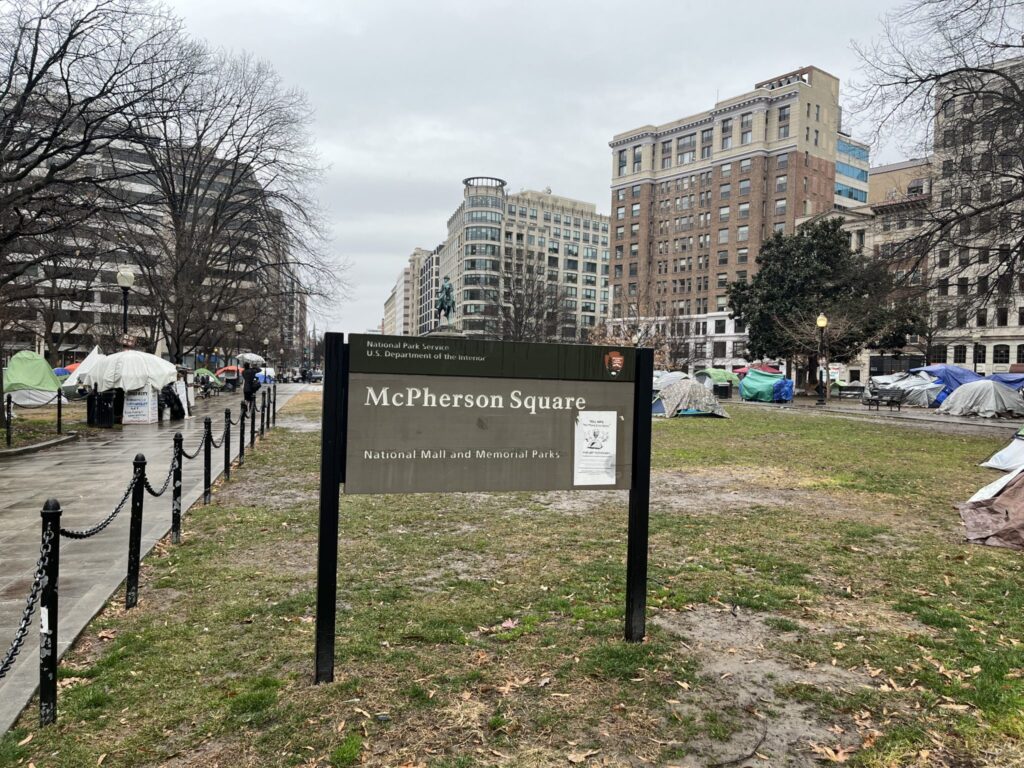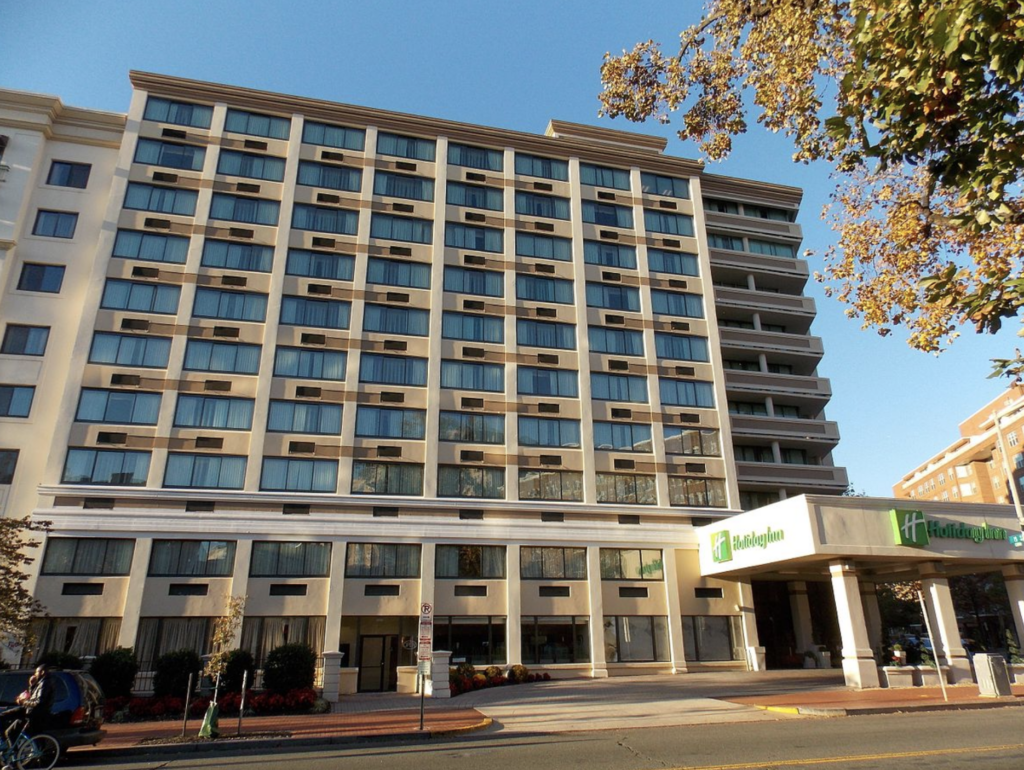With the first COVID-19 vaccinations underway, the District’s homeless community is near the top of the list of people to get the vaccine, according to a draft plan published by the D.C. government in late November.
The COVID-19 vaccine will be distributed in phases as long as the supply remains limited. Phase 1A is focused on frontline healthcare workers, roughly 85,000 people. Phase 1B is composed of over 300,000 individuals, including people experiencing homelessness and residents of transitional housing programs. The rest of phase 1B is made up of critical D.C. government employees and grocery store and nursing home employees.
The District expected to receive 6,825 doses in the first week. D.C. Fire and EMS employees will be among the first to be vaccinated, city officials said during a Dec. 14 update on the health crisis, with Kaiser Permanente to administer the vaccine to its frontline workers starting Dec. 17. During the update, Mayor Bowser said Virginia is sending 8,000 doses from its allotment for D.C. health workers that commute from Virginia.
Distributing the vaccine to multiple populations brings some challenges. The Pfizer vaccine received emergency use authorization from the U.S. Food and Drug Administration on Dec. 11. But it must be shipped and stored at extremely cold temperatures, which requires special equipment, and it can only last for five days in the refrigerator once thawed for use. Because of this, doses will first be distributed to major D.C. area hospitals and facilities that are capable of storing the vaccine.
The FDA will meet Thursday to consider issuing emergency use authorization for a second leading vaccine produced by Moderna. The U.S. has already agreed to purchase 200 million doses, pending authorization.
Both the Pfizer and Moderna vaccines have been found to be more than 90% effective, whereas the standard Flu vaccine is typically 30-60% effective. But the Moderna candidate can be shipped at relatively less cold temperatures, similar to an average freezer. And once thawed for use, the Moderna vaccine can be refrigerated for up to a month, according to data released by the FDA on Dec. 14. These more manageable storage requirements would allow the Moderna vaccine to be distributed more widely in the community, according to the D.C.’s draft distribution plan.
“The Pfizer COVID-19 vaccine can be leveraged to vaccinate those healthcare workers [who are] part of larger institutions,” the plan says. “Whereas the Moderna vaccine can be leveraged to vaccinate those other healthcare workers through a board-based multi-site access strategy.”
According to Dr. LaQuandra Nesbitt, director of D.C. Health, the District expects to receive an allotment from the federal government that will be sufficient to meet the Phase 1A population, though set dates are not in place yet due to the uncertainty of how many doses they’ll receive with each allotment.
[Read more: Hamburg will prioritize homeless people for coronavirus vaccine – will other cities follow suit?]
According to Dr. Linda Fu, a pediatrician from the Children’s National Hospital, the vaccination will be provided for free at federally qualified health centers if you have Medicaid insurance. She said the city is also working with Walgreens to provide more areas of access for people to receive the vaccine. The plan is for people without insurance to be able to get the vaccination for free anywhere, though Fu noted that this is only the intention at this time. There aren’t any concrete plans as to how it will be funded.
Nesbitt acknowledged that it will be difficult for certain communities to be aware of vaccine access once it becomes widespread and that a public information campaign will become a focus once vaccines get approved. Nesbitt mentioned that they already have information toolkits for healthcare providers to distribute, and have been speaking with members of their scientific advisory committee for some time. As part of an awareness campaign, a Dec. 14 video was published by D.C. showing Keisha Jackson, a firefighter, explain why she volunteered for the vaccination despite her previous skepticism, ending with the hashtag #GetvaccinatedDC. The hashtag had not yet been used at the time of publication.
The D.C. Department of Human Services did not make anyone available to discuss specifics about vaccine distribution to the homeless community but said all information available at this time was included in the city’s draft plan.
In terms of offline information, Fu said the pandemic itself makes getting the information difficult, as she would usually recommend libraries as a good place to start. She says that federally qualified health care centers will most likely have some information if approached with questions.
While there are no concrete plans for advertising the vaccine to the homeless community yet, Dr. Catherine Crosland, director of Homeless Outreach Development for Unity Health Care, offered some suggestions in an interview with Street Sense Media. She said that informing the homeless population about the vaccine could be similar to advertising a flu vaccine campaign and could include tactics like going to shelters, parks, and other areas to keep the community informed of what they can do to get vaccinated.
“People experiencing homelessness can get information about services, whether it’s from the providers that they interact with or their managers,” Crosland said. She described pop-up flu vaccine clinics that Unity has previously held at shelter locations, advertised by simple flyers well in advance. “So we could do something similar for the COVID vaccine when that becomes available.”
Crosland stressed that the plan for outreach to the homeless community will only be finalized as the District gets closer to the phase 1B distribution of the vaccine.
The federal government’s “Operation Warp Speed” funded the exploration of 14 vaccine candidates. In addition to the Pfizer and Moderna vaccines, candidates from AstraZeneca/Oxford and Johnson and Johnson are in late-stage trials and may seek FDA authorization by early 2021. The Johnson and Johnson vaccine stands out because it only requires one dose, while Pfizer and Moderna both require a second shot three-four weeks after the first one.






